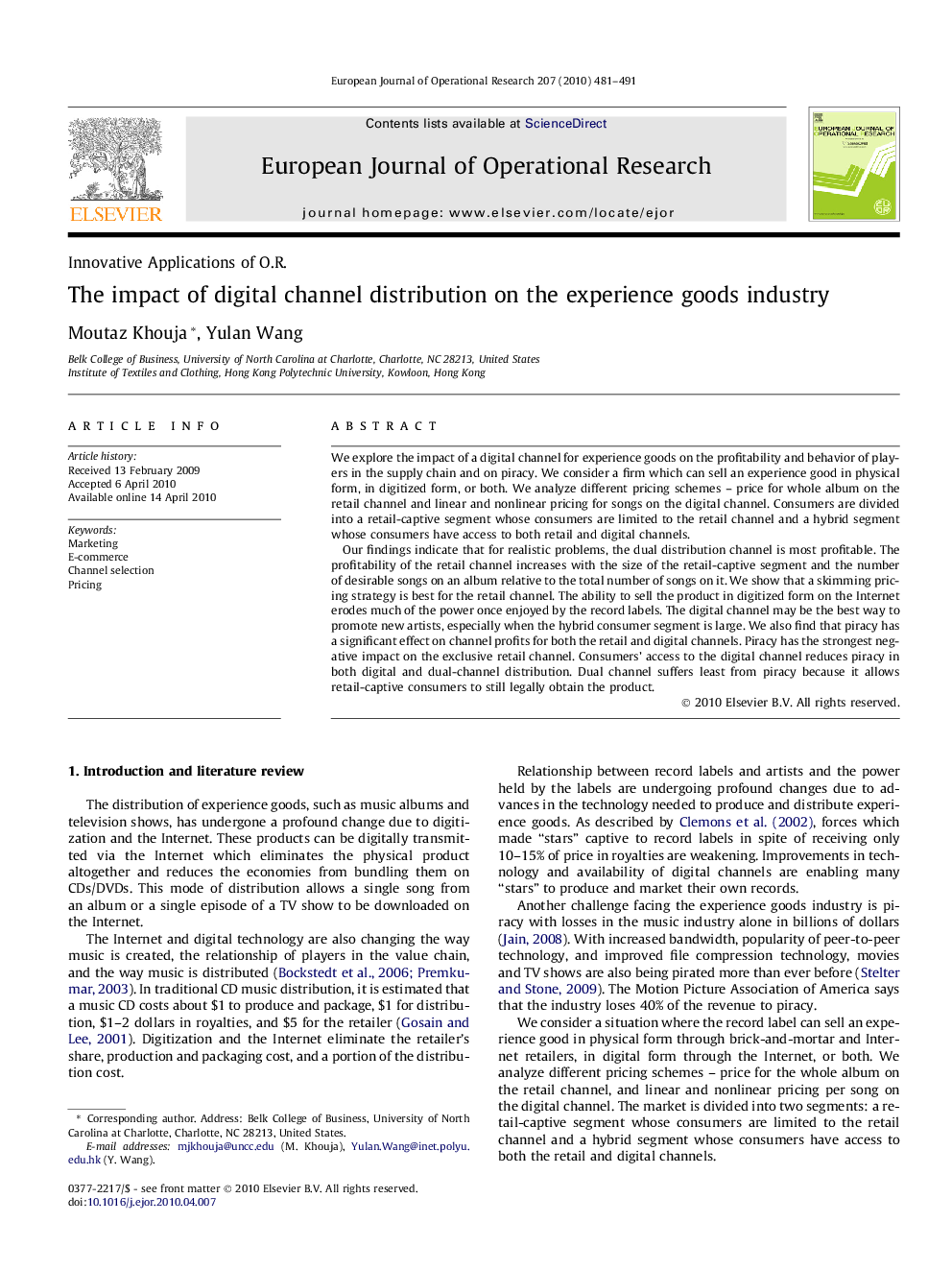| Article ID | Journal | Published Year | Pages | File Type |
|---|---|---|---|---|
| 481106 | European Journal of Operational Research | 2010 | 11 Pages |
We explore the impact of a digital channel for experience goods on the profitability and behavior of players in the supply chain and on piracy. We consider a firm which can sell an experience good in physical form, in digitized form, or both. We analyze different pricing schemes – price for whole album on the retail channel and linear and nonlinear pricing for songs on the digital channel. Consumers are divided into a retail-captive segment whose consumers are limited to the retail channel and a hybrid segment whose consumers have access to both retail and digital channels.Our findings indicate that for realistic problems, the dual distribution channel is most profitable. The profitability of the retail channel increases with the size of the retail-captive segment and the number of desirable songs on an album relative to the total number of songs on it. We show that a skimming pricing strategy is best for the retail channel. The ability to sell the product in digitized form on the Internet erodes much of the power once enjoyed by the record labels. The digital channel may be the best way to promote new artists, especially when the hybrid consumer segment is large. We also find that piracy has a significant effect on channel profits for both the retail and digital channels. Piracy has the strongest negative impact on the exclusive retail channel. Consumers’ access to the digital channel reduces piracy in both digital and dual-channel distribution. Dual channel suffers least from piracy because it allows retail-captive consumers to still legally obtain the product.
